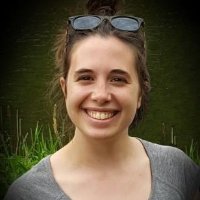
Research Fellow: Justine Molron
hosted by Itasca Consultants S.A.S. and Department of Geosciences, University of Rennes 1
Supervisors
Caroline Darcel – Itasca Consultants S.A.S
Philippe Davy – University of Rennes 1
Niklas Linde – University of Lausanne
co-supervision with Jan-Olof Selroos – SKB
Secondments
SKB – 1 month (2017, 2018)
CNRS – 4 months (2018)
UniL – 4 months (2018 – 2019)
Research objectives
Develop and test a general framework to condition discrete fracture network (DFN) models to geological mapping and Ground Penetrating Radar (GPR) data in order to reduce the uncertainty of fractured rock properties and flow patterns.
Project description
Predicting the flow and mechanical behaviour of fractured rock masses is a major challenge for a large number of hydrological and geotechnical applications. This is mostly achieved by deriving DFN models from field and core mapping and pumping tests. The present research project is focused on the conditioning of DFN models to geophysical imaging data close to tunnel walls. The objective is to develop a new approach for better assessing the safety of the bedrock barrier around canisters for nuclear waste disposal.
Tasks and methodology
The first part is to investigate the possibility to use the Ground Penetrating Radar (GPR) method to identify fractures close to tunnel walls at depth. Several data acquisition campaigns (GPR data acquisition + tracer tests) are planned at the SKB Äspö tunnel Hard Rock Laboratory (HRL) in Sweden. Secondly, the geophysical data shall be introduced in a broader DFN modelling framework which already involves fracture structural and hydrological data.
Data and Datasets
All the data acquired during the project will be made available to the community to understand flow and transport patterns in fractured media. The methodology offers a new approach for SKB to assess confinement properties of the bedrock barrier around canisters for nuclear waste disposal. Data is already available on the H+ database.
Access to datasets used for the publication in Engineering Geology.
Access to dataset of an article submitted in Engineering Geology
Dissemination and communication
2020
Molron, J., Linde, N., Baron, L., Selroos, J.-O., Darcel, C., & Davy, P. (2020). Which fractures are imaged with Ground Penetrating Radar? Results from an experiment in the Äspö Hardrock Laboratory, Sweden. Eng. Geol.
https://doi.org/10.1016/j.enggeo.2020.105674
Abstract Access to data
2019
Molron, J., Linde, N., Baron, L., Selroos, J-O., Darcel, C. and Davy, P (2019). A field assessment of the ability of Ground Penetrating Radar to detect fractures in very low permeable crystalline rock. American Geophysical Union Fall Meeting 2019, Dec 2019, San Francisco, United States. pp.H41H-1764
Justine has received the AGU Outstanding Student Presentation Award for her presentation.
Molron, J., Linde, N., Baron, L., Selroos, J-O., Darcel, C. and Davy, P (2019). Capacité de détection des fractures par la méthode de surface « Ground Penetrating Radar » : résultats d’expériences réalisées dans le laboratoire souterrain d’Äspö (Suède). Invited speaker for Séance technique : Massif fracturé et Reconnaissances, Comité Français de Mécaniques des Roches, CNAM, Paris, France. Abstract and Presentation.
CBH Studiedag Hydrogeofysica – Journée d’étude Hydrogéophysique, Rochefort (Belgium), May 2019 – presentation “Identification of 3D fracture distribution and fracture connectivity by combined Ground Penetrating Radar Imagery and tracer tests at the Äspö Hard Rock Laboratory, Sweden”
Journées Scientifiques de l’ED GAAL, 2019 – poster ” Identification of 3D fracture distribution and fracture connectivity by combined Ground Penetrating Radar Imagery and tracer tests at the Äspö Hard Rock Laboratory, Sweden”
EGU General Conference, April 2019 “Identification of 3D fracture distribution and fracture connectivity by combined Ground Penetrating Radar Imagery and tracer tests at the Äspö Hard Rock Laboratory, Sweden” abstract
French MT180 (Ma thèse en 180 secondes)- 5 March 2019 – Rennes
“Conditionnement des modèles de réseaux de fractures à des données géologiques et géophysiques pour la réduction des incertitudes dans les modèles d’écoulement et de transport” Slide used during the presentation
2018
4th Cargèse Summer School 2018 – poster : “Reducing the uncertainty of discrete fracture network models by ground penetrating radar imagery: case study at the Äspö Hard Rock Laboratory, Sweden”
Conference CMWR in Saint-Malo, France (2018)
